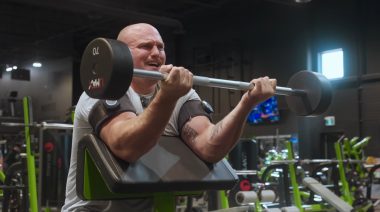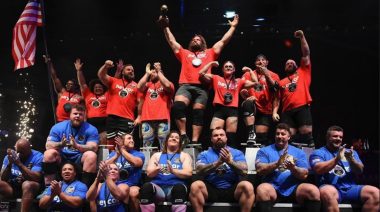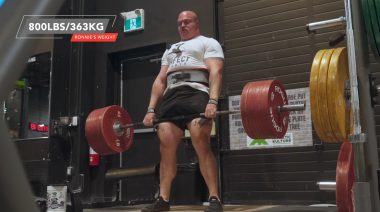There seems to be different emphases in current training systems as to whether to focus on power optimization or power efficiency. Power optimization is being able to move an (often heavy) object as quickly as possible with no regard for saving oneself for another rep. Some examples might be a one-rep maximum lift, strict pull-ups, or sprinting. StrongFirst emphasizes power optimization.
There seems to be different emphases in current training systems as to whether to focus on power optimization or power efficiency. Power optimization is being able to move an (often heavy) object as quickly as possible with no regard for saving oneself for another rep. Some examples might be a one-rep maximum lift, strict pull-ups, or sprinting. StrongFirst emphasizes power optimization.
Power efficiency is being able to move an object repeatedly over time. Some examples include running 3,200 meters, completing kipping pull ups, or snatching a kettlebell for ten minutes. CrossFit workouts generally emphasize power efficiency.
In this article I will attempt to answer the question of what is best: power optimization or power efficiency. I am setting myself up for failure because the discussion of power optimization versus power efficiency is not a dichotomy. It is a continuum where activities can be placed on the spectrum. However, for this article we will discuss the far ends of the spectrum and treat it as a false dichotomy.
Furthermore, my failure is sealed, as my outcome of what is best is not defined. What is it actually best for: lack of illness, life extension, maximum strength, VO2 max, endurance, fat loss, or muscle gain. In a later article in the series, I will use the latest research to be much more specific on defining the outcomes. However, for this article, my goal is to look at what old-time strongmen defined as best.
Georg Hackenschmidt, the Russian Lion, was known for his impressive feats of strength. He reportedly lifted 269lbs with one hand over his head to win a bet for a pair of trousers (which based on the photo of him above were clearly needed). He was also a student of strength, as he was a voracious reader and wrote many books on the topic (he also is reported to have spoken seven languages). In the following quotation, Hackenschmidt seems to be indicating that you must lift heavy to be strong:
Some trainers recommend to their pupils for the training of all muscle groups one and the same (light) weight and believe they are able to obtain the same effect by frequent repetitions. My experience has taught me that this is wrong, for the muscles of men or animals who are distinguished for certain feats of endurance are by no means over-developed. A long-distance runner or long-distance cyclist always has comparatively thin legs, as have a racehorse, stag, or greyhound.
Nature does not act without aim and purpose. Hence there is a great difference between feats of endurance and feats of strength. One must consider that, although it is quite possible to enlarge muscles by certain light, prolonged exercises, at the same time the development of the sinews may be neglected, and it is the sinews which transport the action of the muscles to the bone frame. The sinews can only be exercised and strengthened by correspondingly heavy muscle work.
Besides, to take a paradoxical example, it is quite impossible to improve strong muscle groups, as, for instance, the hip muscles, with light-weight exercises. A further illustration of the fallacy of attempting to develop the muscles by frequent repetitions with the same light exercises may be found in a comparison with any and every other form of athletics, in which a man would never think of merely repeating his training programme. In order to improve himself either in pace or distance, he must set himself a steady progression of arduous effort.
Arthur Saxon (pictured below) seemed to view that strength efficiency was the most important outcome in the following statement (and it is quite close to the contemporary CrossFit view of fitness):
Genuine strength should include not only momentary strength, as proved by the ability to lift a heavy weight once, but also the far more valuable kind of strength known as strength for endurance. This means the ability, if you are a cyclist, to jump on your machine and ride 100 miles at any time without undue fatigue; if a wrestler, to wrestle a hard bout for half an hour with a good man without a rest, yet without becoming exhausted and reaching the limit of your strength.

However, in the same book he describes his training to be lifting heavy weight with few repetitions.
I would say that if you must use dumb-bells for daily training, use heavy ones with fewer repetitions rather than light ones with fewer repetitions… when a man has a good development and takes to weight-lifting, he will be wise to drop all his light exercises, and reserve the energy and nervous power such exercises would set up for weight-lifting… Some would say that light exercises are essential if you would retain and improve your speed and quickness, and that weight-lifting makes a man slow. I would say in reply that the man who wishes to be a champion weight-lifter is not likely to be also a champion runner, tennis player or boxer.
In general, it seems that the old-time strongmen relied on lifting heavy things in order to lift heavy things. They also reserved energy and power so they could lift heavy. They might have aspired to be the fittest around, but the accomplished that by lifting heavy with a great deal of rest in between sets. These workouts seem very similar to workouts by Olympic track and field athletes in that they are never training to exhaustion and are always training to optimize power.
References:
1. Hackenschmidt, George. 2011. The Way To Live: In Health and Physical Fitness. Reprint edition. CreateSpace Independent Publishing Platform.
2. Saxon, Arthur. 2011. The Development of Physical Power. CreateSpace Independent Publishing Platform.






